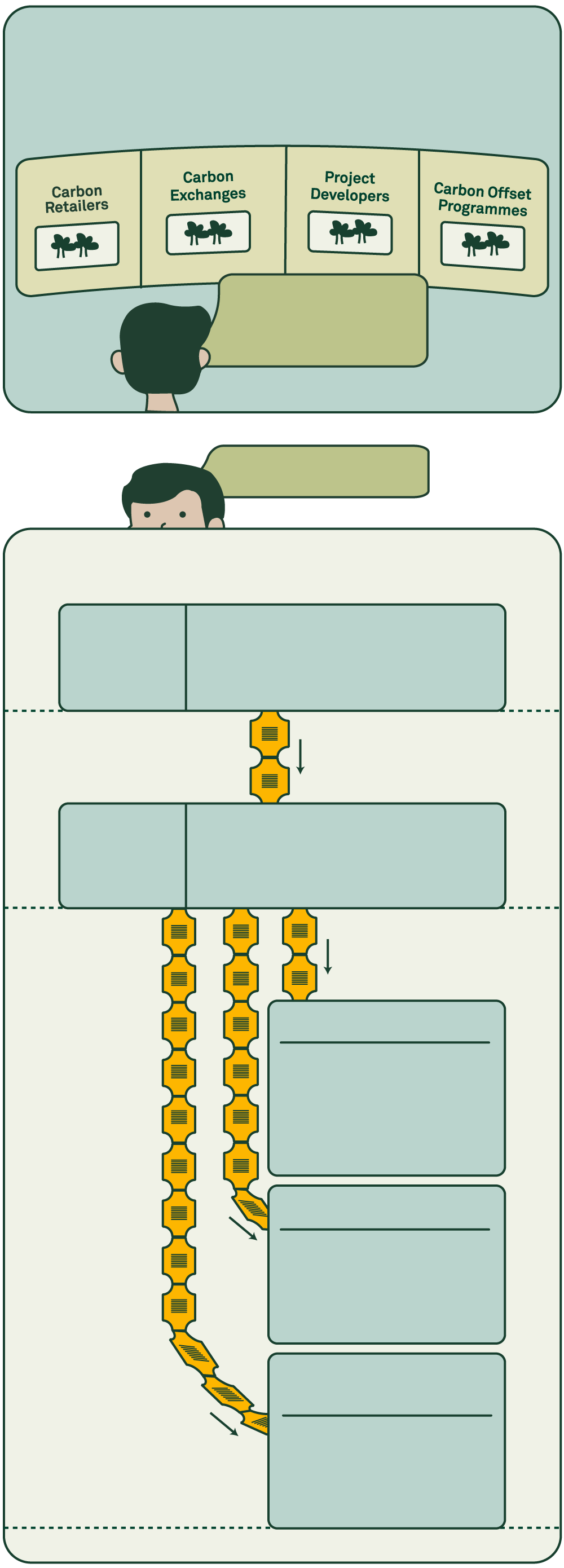
At its heart, the carbon market is about the relationship between the credit buyer and project developer (or credit supplier). But there are more players and layers to the market to make sense of.
I know who Project Developers are... but what are the others?
So many things to know!
In reality, the system is much more complex than that.
Project
Developers
Establish the projects, calculate emissions reductions impacts, generate credits based on them, and sell these credits.
Independently check if projects and credits are legitimate before projects are registered. Also run checks on ongoing projects.
Third-party
Auditors
Carbon Exchanges
Essentially “marketplaces”
for carbon credits; buyer
doesn’t have to buy from
project developers
directly.
Carbon Retailers
Offer a range of credits for
buyers to purchase; buyer
doesn’t have to buy from
project developer directly.
Carbon Offset
Programmes
Set standards for and
certifies carbon credits;
they also issue credits
themselves.

At its heart, the carbon market is about the relationship between the credit buyer and project developer (or credit supplier). But there are more players and layers to the market to make sense of.
I know who Project Developers are... but what are the others?
So many things to know!
In reality, the system is much more complex than that.
Establish the projects, calculate emissions reductions impacts, generate credits based on them, and sell these credits.
Project Developers
Independently check if projects and credits are legitimate before projects are registered. Also run checks on ongoing projects.
Third-party
Auditors
Carbon
Retailers
Carbon Offset
Programmes
Carbon
Exchanges
Offer a range of credits for
buyers to purchase; buyer
doesn’t have to buy from
project developer directly.
Set standards for and
certifies carbon credits;
they also issue credits
themselves.
Essentially “marketplaces”
for carbon credits; buyer
doesn’t have to buy from
project developers directly.

At its heart, the carbon market is about the relationship between the credit buyer and project developer (or credit supplier). But there are more players and layers to the market to make sense of.
I know who Project Developers are... but what are the others?
So many things to know!
In reality, the system is much more complex than that.
Project
Developers
Establish the projects, calculate emissions reductions impacts, generate credits based on them, and sell these credits.
Independently check if projects and credits are legitimate before projects are registered. Also run checks on ongoing projects.
Third-party
Auditors
Carbon Exchanges
Essentially “marketplaces”
for carbon credits; buyer
doesn’t have to buy from
project developers
directly.
Carbon Retailers
Offer a range of credits for
buyers to purchase; buyer
doesn’t have to buy from
project developer directly.
Carbon Offset
Programmes
Set standards for and
certifies carbon credits;
they also issue credits
themselves.